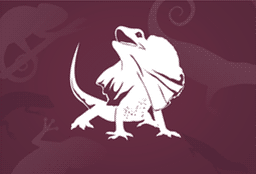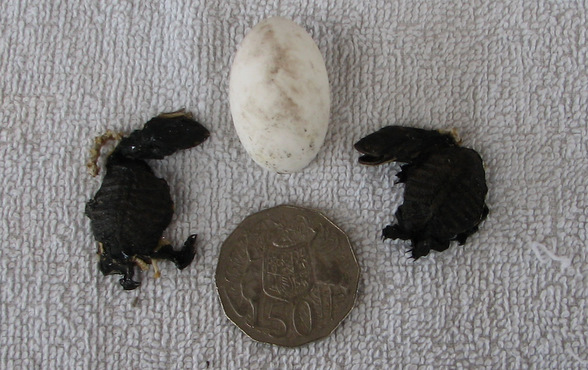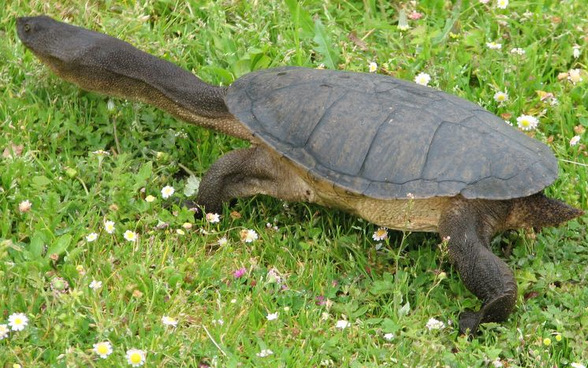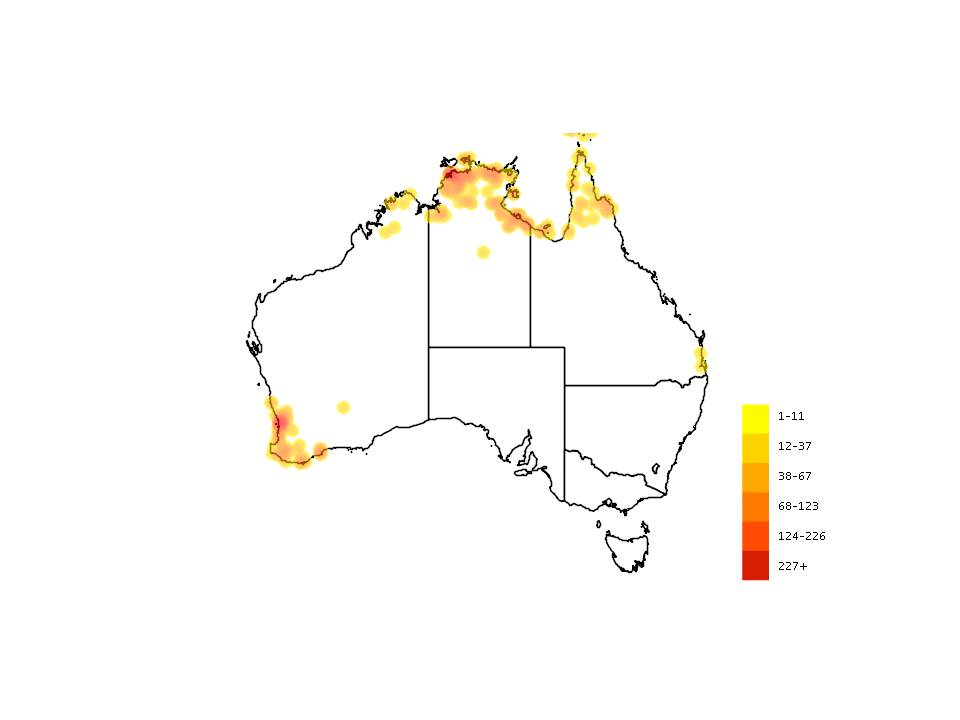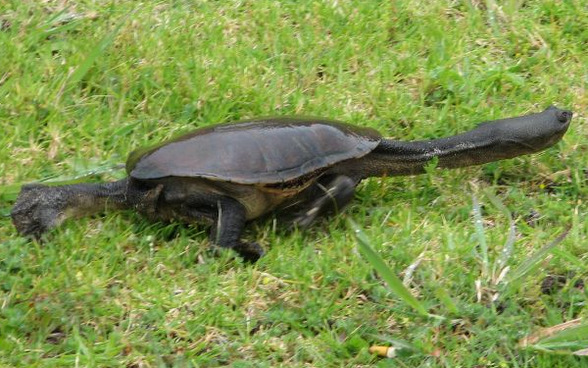Behaviour
Diet
Fish and tadpoles, aquatic invertebrates, and baby waterbirds.
Movement
When prey is in range the Oblong turtle can strike its head forward to seize it.
Breeding
Males become sexually mature at a carpace length of 14 cm. Females with a carpace of 15 - 21 cms are usually mature. Nest sites are usually open and free from thick vegetation, and once the maximum daily air temperature remains above 17.5°C the females come ashore to nest. Nesting in Spring is triggered by a falling trend in barometric pressure below 1015Hpa. Females can lay up to three clutches during the nesting season from September to January. Each clutch ranges from 3 -15 eggs The natural incubation period ranges from 183 to 222 days, depending on weather conditions. Hatchlings are approximately 31 mm in carapace length.
Field Guide
Improve your identification skills. Download your Oblong Turtle guide here!

